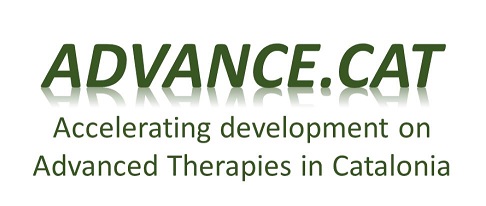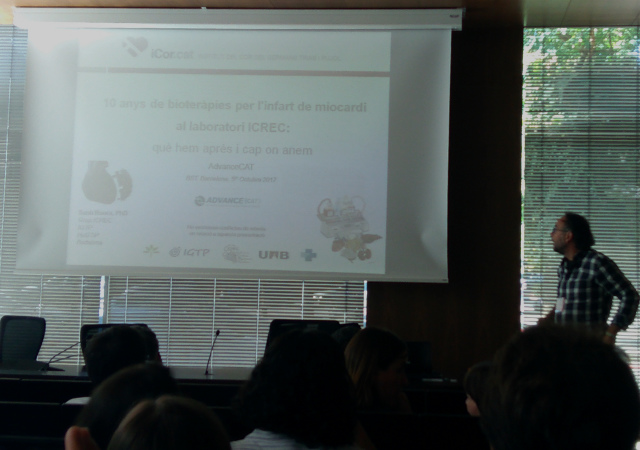The future of cell therapies, in Advance(cat)

The development of therapies through induced pluripotent stem cells (iPSC) would make it unnecessary to use embryonic stem cells (ESC). This technique would avoid the use of embryos for extraction or the patient’s need for immunosuppression, as his/her own cells would be used. Bioengineering has developed 3D bioprinting, which enables us to mimic organ or tissue matrices in vitro, where these cells can be cultivated and grown in the laboratory. This was one of the aspects covered at the New options in cell therapy seminar, which was organised as part of the Advance(cat) project at the Blood and Tissue Bank (BST).
Mesenchymal stem cells (MSC) also offer us the opportunity to develop cell therapies. They possess the capacity to be differentiated from cardiac cells with which trials are already being conducted in animal models. The results are promising, with cardiac recovery observed in rats and mice, which means that their cardiogenic properties are very good. These cells are marked with bioluminescence to distinguish them from the animal’s own cells. This luminescence enables us to know whether the transplanted cells stay alive and whether they express cardiac genes.
Apart from the MSC themselves, it has been detected that these cells secrete extracellular vesicles that can transmit immunomodulator potential and can also participate in regeneration processes.
In the field of ophthalmology, advanced therapies have already become established. This is the case of corneal cell therapy. The eye’s sclerocorneal limbus contains progenitor cells called limbar cells and these maintain the function of the corneal epithelium and the transparency of the cornea. When these cells fail in one of the eyes, the procedure is to perform a biopsy of the sclerocorneal limbus of the healthy eye in order to cultivate the limbar cells in a biocompatible substrate (fibrin gel in the shape of a lens) with the aim of growing them enough to enable transplantation to be carried out in the sick eye. When the condition affects both the patient’s eyes, bone marrow MSC or stem cells are used to distinguish them from corneal epithelial cells for transplantation.

Advance(cat) is funded by the Agency for Business Competitiveness (ACCIÓ) of the Government of Catalonia and the European Union through the ERDF (European Regional Development Fund) operative programme, Catalonia 2014-2020.
